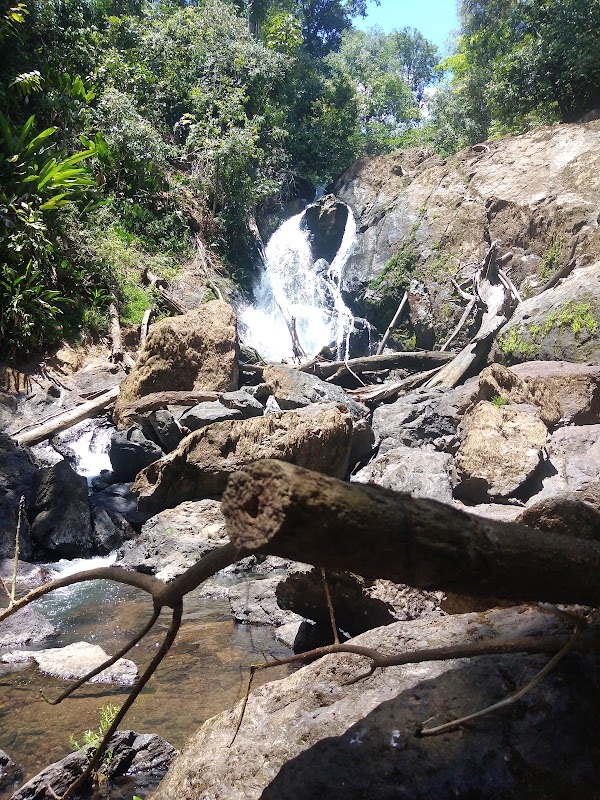Exploring Piedras Blancas: Top Hiking and Wildlife Trails Near Puerto Jiménez
Piedras Blancas National Park near Puerto Jiménez offers a raw, immersive hiking experience through dense rainforest alive with diverse wildlife. From moderate loops to steep ridges with sweeping gulf views, this guide covers the best trails and practical tips to prepare for a deeply engaging outdoor adventure.
Start Early to Beat the Heat
Begin your hike at dawn to enjoy cooler temperatures and maximize wildlife sightings when animals are most active.
Wear Sturdy Footwear
Trails include muddy sections and root-covered slopes; waterproof hiking boots with good traction ensure safe footing.
Carry Insect Repellent
The rainforest hosts dense mosquito and insect populations; repel bites to stay comfortable and avoid irritation.
Bring Plenty of Water
Expect humid conditions—carry at least two liters per person to stay hydrated throughout your hike.
Exploring Piedras Blancas: Top Hiking and Wildlife Trails Near Puerto Jiménez
Piedras Blancas National Park commands your respect from the moment you step onto its trails, where the dense rainforest challenges every sense and the wildlife feels unapologetically alive. Just outside Puerto Jiménez, this protected wilderness stretches across roughly 14,000 hectares, offering a collection of trails that invite both casual walkers and experienced trekkers to engage with something fiercely itself. Here, every river dares you to cross, every bird’s call punctuates the thick air with urgency, and the forest floor hums with life.
Among the best routes is the Quebrada Bonita Trail, a moderate 6-kilometer loop with an elevation gain of about 250 meters. It threads through old-growth forest where jaguars have been known to roam, though sightings remain rare—nonetheless, the possibility sharpens your attention to the shifting textures of the jungle. The trail meanders alongside murmuring streams, their currents pushing forward relentlessly, echoing the ancient pulse of this land.
For a steeper challenge, the Cerro Búho Trail demands respect. Over 8 kilometers with nearly 400 meters of elevation, it climbs steadily toward panoramic views where the canopy opens to reveal the Gulf of Dulce shimmering in the distance. The terrain shifts from muddy roots to rocky paths, requiring stable footwear and a steady pace. Expect to feel the forest get denser, layered in sounds from howler monkeys to the sudden splash of a coati's escape.
Wildlife watchers will find well-marked observation points along the Sendero del Oso, an easier 3.5-kilometer trail. No giant bears here, as the translated name suggests, but this path is a hotspot to spot tapirs moving quietly through underbrush or toucans perched boldly among the bright foliage. Early morning hikes provide the best chance to witness this activity before the heat settles over the park.
Preparations matter here. Hydration packs and sturdy hiking boots are non-negotiable, as tropical rains can turn the ground slippery and rivers swell without warning. Early starts help to avoid midday humidity and maximize wildlife encounters. A lightweight rain jacket and insect repellent further secure your comfort and safety.
Piedras Blancas isn’t a backdrop to conquer—it’s a living participant in your journey. The forest tests your focus and rewards with moments of raw connection: a spider monkey swinging deliberately ahead, the scent of wet earth rising after rain, or the shadow of a toucan dripping bright color onto your path. Each trail is a direct line to nature’s pulse, practical in its demands and vivid in its offerings.
Nearby Trips
All Adventures
Boat Charters
Water Activities
Adventures near Puerto Jiménez
Discover the unique and memorable adventures that make Puerto Jiménez special.
Frequently Asked Questions
Are guided tours required for hiking in Piedras Blancas?
While not mandatory, guided tours are recommended especially for first-time visitors to enhance wildlife spotting and ensure safety in remote sections.
Can I see big cats like jaguars on these trails?
Jaguars inhabit the park but are elusive. Sightings are extremely rare; their presence adds an edge of wild authenticity rather than a guaranteed encounter.
What is the best time of day for wildlife viewing?
Early mornings just after sunrise offer the highest chance of spotting active animals before the heat of day settles in.
Are there any water sources along the trails?
Streams and rivers run near some trails, but water isn't safe to drink without proper treatment. Always bring enough potable water.
Is camping allowed inside Piedras Blancas National Park?
Camping is not officially permitted; accommodations are available near Puerto Jiménez with day access to trails.
Are the trails accessible during the rainy season?
Yes, but expect muddy conditions and occasional trail flooding. Proper gear and cautious hiking are necessary.
Recommended Gear
Waterproof Hiking Boots
Protect feet from mud and wet conditions while maintaining grip on slippery roots and rocks.
Hydration Pack or Water Bottles
Ensure ample water to offset sweat and humidity during hikes.
Lightweight Rain Jacket
Protects against sudden tropical showers common in the rainy months.
Insect Repellent
Helps reduce mosquito and insect bites, crucial for comfort and health.
Local Insights
Hidden Gems
- "The Mirador Quebrada Bonita offers a lesser-known viewpoint with panoramic glimpses of the forest canopy and Gulf of Dulce."
- "Off-trail meadows near Sendero del Oso are quiet spots where tapirs often graze at dawn."
Wildlife
- "White-faced capuchin monkeys are regularly seen swinging among trees, often alerting hikers to nearby predators."
- "Spectacled caimans patrol slow-moving river bends, shimmering briefly when disturbed by footsteps."
History
"Piedras Blancas was established to protect one of Costa Rica’s most intact rainforest regions after decades of logging, preserving vital habitat corridors for species including the jaguar and giant anteater."

